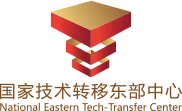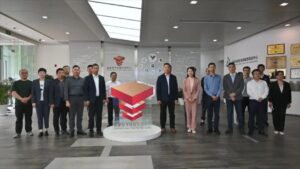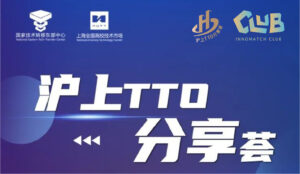Intellectual Property & Legal Manager, Shanghai Jifeng Mingyuan Semiconductor Co.
Preface.The chip industry, that is, integrated circuit industry is the national economy and social development of the strategic, basic, pioneering industry, in the computer, consumer electronics, network communications, automotive electronics and other major fields play a key role, is the world's major countries or regions to seize the strategic high ground, especially the developed countries in the integrated circuit industry in the field of investment in a large number of innovative resources, competition is becoming increasingly fierce. In the national "two sessions" after the introduction of 10 billion industry fund, led by the government, to absorb social capital, at least hundreds of billions of investment in the integrated circuit industry. 2014, No. 4 was introduced, focus on the development of wafer manufacturing, taking into account the design, packaging, equipment and materials, and prioritize support for leading enterprises.
The future of IC product innovation is not just to integrate more functions, but to innovate and develop creative products around the improvement of people's quality of life. The ability to develop innovative products with precise market positioning will determine the rise and fall of an enterprise. Technology transfer plays a pivotal role in the development and marketing of innovative products.
Transfer of technology by enterprises and protection of their intellectual property rights
Integrated circuit enterprises generally obtain technical achievements through independent research and development, and transform them into innovative products for commodity trade, or conduct technology trade through technology licensing and technology transfer. Innovative products need to go through a long cycle before they are launched on the market, which usually includes: innovative product definition, product development and validation, product production and testing, product sampling for promotion, product trial production, product mass production, and so on. In contrast, the cycle of pushing technological achievements into the market through technology licensing and technology transfer is shorter. Therefore, compared with technology trade, the R&D and management costs of commodity trade methods are higher and the speed of recovering capital is slower.
When positioning themselves, IC enterprises should choose the appropriate technology transfer methods based on their R&D and financial capabilities, such as a single commodity trade, technology trade or a combination of these methods. Compared to commodity trade technology transfer, IC enterprises that adopt technology trade technology transfer should focus on their intellectual property strategy and layout, such as how to formulate standardized technology licensing and technology transfer rules, how to enable licensed IC enterprises to pay licensing fees through effective measures, and how to reduce the risk of their technological achievements being reversed through effective intellectual property protection. Engineering, the risk of being infringed.
For those IC enterprises that adopt commodity trade to transform their technological achievements, if the products they develop are the first of their kind, they should actively protect the intellectual property rights of their products by combining technology secrets and patent applications, so as to provide market advantages for their products through technology accumulation; if there are competing products in the market, they should, at the early stage of product development, make a thorough analysis of the performance, patent technology, and the performance of the competing products. Proprietary technology for analysis, in the product development process should be distinguished from competitive products involved in the patent technology, for product development process in a timely manner to protect intellectual property rights, so that its products have a competitive advantage in the market competition.
For integrated circuit enterprises that adopt technology trade to transform their technological achievements, if the technological achievements developed by them can be used in the products of different companies (such as integrated circuit production process), that is, other integrated circuit enterprises need to design their specific products based on the above-mentioned technological achievements, such integrated circuit enterprises should use a combination of technology secrets and patent applications to protect the intellectual property rights of the technological achievements. For this type of IC enterprise, another key point is how to protect the intellectual property rights to prevent its technological achievements from being appropriated by competitors or other IC enterprises that have been licensed.
Technology transfer within industry sectors
The slowdown in global IC growth, the return of OEMs to research and development, and new demand for chips in emerging markets, including China, due to industry upgrades have led to a flurry of M&A and consolidation in the global IC industry. This includes Intel's $16.7 billion acquisition of Altera, Avago's $37 billion acquisition of Broadcom, and ON Semiconductor's (ON Semiconductor) acquisition of Fairchild Semiconductor (Fairchild Semiconductor), which also specializes in analog and power ICs, for a total price of about $2.4 billion. This is a new example of the "consolidation madness" that is taking place in the semiconductor industry.
Under the tide of mergers and acquisitions in the IC industry, many IC enterprises have enriched their product lines and further accumulated proprietary and patented technologies by merging and reorganizing sister companies in the industry. Under the influence of mergers and acquisitions, several large or medium-sized enterprises will gradually be formed in each segment of the IC industry, which means that the future participants in the IC industry will be large or medium-sized enterprises.
As an example, after 8 years of development, Jingfeng Mingyuan (Bright Power) has achieved the world's first in the field of LED lighting drivers, with a global market share of more than 30%.Jingfeng Mingyuan is an industry leader in the field of LED lighting drivers, concentrating on researching product trends and focusing on the development of innovative products. In March 2016, Jingfeng Mingyuan acquired all the technical achievements (including proprietary technology and intellectual property) of Chengdu Minchuang Technology Company Limited, on the basis of which Jingfeng Minchuang established a smart & lighting product line, focusing on the application and development of smart lighting products. This acquisition is inseparable from the management's sensitivity to the market, and only the long-standing crisis awareness can make the enterprise invincible.
From the above description, it can be seen that in the integrated circuit industry, it can enrich its own product types and obtain the most direct access to existing technologies through asset acquisition, mergers and reorganization, and companies can form their own technologies and develop better products based on the digestion of existing technologies. To a certain extent, this approach can reduce the technical difficulty of research and development of new products, the time to promote new products, while effectively shortening the time to market, laying the foundation for seizing market opportunities.
Technical cooperation and direct investment
Technology, inventiveness and skills are the key factors for enterprise competitiveness. With the intensification of the competitive environment in the IC industry, the shortening of the product life cycle, and the accelerated development of new products or the improvement of old products for the world market, the technological strength and innovation capability of enterprises are becoming more and more important determinants for enhancing the competitiveness of enterprises.
In the integrated circuit industry, firms in the same field expect to share technology and knowledge resources by establishing strategic alliances. In this type of technology transfer, which is often two-way or multi-way, the alliance parties share research and development facilities, which can reduce resource pressures and expenses, share risks, and inhibit competition. In practice, large enterprises are often in an absolutely dominant position, large enterprises often take the lead in setting industry standards and incorporating their patented technologies into industry standards, while other enterprises must obtain permission for patented technologies incorporated into industry standards before they can produce and sell their products, which undoubtedly increases the product costs of small and medium-sized enterprises.
In addition, the state strongly advocates the technology transfer mode of combining industry-university-research, hoping that enterprises can establish long-term cooperation with universities and research institutes, through the technology transfer of industry-university-research, on the one hand, can enhance the innovativeness of enterprises' products, on the other hand, can promote the transformation of technical achievements of universities. However, there are some drawbacks to this combination, such as the different objectives of product research and development between enterprises and universities and research institutes, which sometimes makes it difficult to form a good cooperative relationship and leads to conflicts in the management process and profit distribution.
In addition to this, companies can also make direct investments in promising companies by means of capital injections into the investee companies to achieve specific objectives of the company, such as investments in products in different segments or the realization of alliances of companies in the same segment.
Bright Power, for example, is a direct investor. Up to now, Bright Power has invested in three IC design companies, namely, Shanghai JuWei IC, Shanghai HanFeng Electronic Technology and Suzhou HaoHan IC. The investment companies have expanded their business scope through direct investment, leveraging the expertise of potential companies in different industries and the positive feedback from the investee companies to the investment companies.




